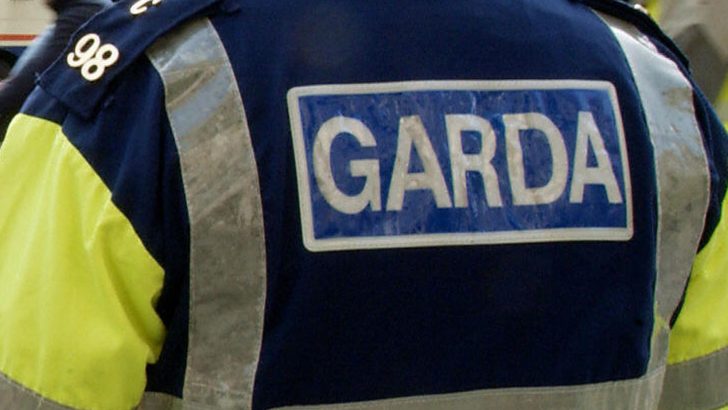No-one can pretend that Ireland is not becoming a more dangerous place, writes David Quinn
The growing savagery of violence that is taking place between drug gangs here in Ireland has shocked a public already exposed to seemingly endless murderous incidents between rival gangs fighting turf wars and ordering revenge killings.
Ireland has a long history of political violence, but this has now been replaced by a new, and ever more depraved kind of gangster violence of the sort we thought belonged only in American police dramas or in the ghettos of New York, Los Angeles or the southside of Chicago.
Ireland did not seem like the sort of place where gangsterism of this kind could take root. Surely we were too small, too cohesive, and our sense of community was too strong? Didn’t we still have a residual sense of decency, of basic right and wrong that would keep even the worst gang members from descending into total moral savagery? On all counts we were wrong.
Depraved
The murder and dismemberment of 17-year old gang-member, Keane Mulready-Woods, has prompted talk of ‘narco-terrorism’ of the sort associated with the most depraved drug gangs of Columbia and Mexico. Something wicked this way comes. No, it is here.
In the same week this happened, two truck-drivers on the northside of Dublin were shot and seriously injured, in another gang-related incident. And in Cork a young man was stabbed to death at a party. This had nothing at all to do with the gangs. This was only a sign that we are becoming more violent, like the horrible murder of a homeless man in an abandoned house in Cork over the Christmas period. He was beheaded and had his limbs chopped off.
There was a time when that last murder alone would have dominated the news for weeks, as murders used to do, but it was quickly forgotten, and we moved on to the next murder.
Also over Christmas, footage turned up on social media of a huge brawl that broke out near the Red Cow roundabout on the outskirts of Dublin that required the intervention of 20 garda cars.
Over the new year, a running fist-fight was recorded on Harcourt Street in Dublin city centre involving dozens of young people.
Irish Rail are calling for improved security for its employees because violence at railway stations and on trains is on the increase. Armoured security men on the Luas are now a common sight.
No-one can pretend that Ireland is not becoming a more dangerous place. They can’t possibly pretend that back in the 1950s it was merely that we were better at hiding things, like abuse in the home or in institutions. But the only kind of crime that people cover up is the type that makes them look bad.
You can’t cover-up violence on the streets. People will mainly report when their home is burgled or their car stolen. The drug-gangs specifically want us to know what they are doing, but even if they did what the IRA sometimes did, that is kill someone and bury the body in secret, we would still know when someone has gone missing and would suspect the worst, especially if they had crime connections.
These days most schools are as successful at teaching religion as they are at imparting the Irish language, that is, not very successful at all”
We are also in the middle of a cocaine epidemic, and number coming forward for treatment is growing all the time. The drug gangs are both feeding the demand and adding to it. The problem is now found in every part of the country.
So no, let’s not pretend things aren’t getting worse. That is simply head-in-the-sand stuff. But it wasn’t supposed to be this way. RTE keep telling us that Irish society is becoming more tolerant and compassionate. To put it mildly, the picture is far more complicated than that.
In terms of gang violence, there is obviously a close relationship with poverty. Those who join the gangs, frequently when they are still children, are mostly from poor backgrounds.
On the other hand, we have always had poverty, but we have not always had drug gangs, and the violent gangs we had in the past did not resort to the sort of extreme violence now becoming commonplace.
We read about the typical profile of gang members in places like the United States and see that another factor which predicts whether they will become embroiled in crime or not is a broken home and the absence of a good male role-model, first and foremost a good father.
In the absence of such a person, the gangs can become a substitute ‘father-figure’, a way for boys to prove themselves, but also to develop the very worst traits of ‘toxic masculinity’.
The decline of religion surely plays a part here. People have to obtain their moral formation from somewhere.
Christianity gave people a very strong sense of right and wrong, even if they didn’t always act on it. A certain baseline morality existed. We knew about the example of Jesus. We knew the Ten Commandments. We knew that judgement awaited at the end of our lives, and we would face our just deserts, whatever they may be.
Yes, we can teach people morality without religion and a lot of gang-members will have gone to Catholic schools. But these days most schools are as successful at teaching religion as they are at imparting the Irish language, that is, not very successful at all, because religion is frequently no longer practised at home, and lacks a strong place in the local community.
Didn’t we still have a residual sense of decency, of basic right and wrong?”
The fact is that for many people, consumerism and status have replaced religion as their guiding stars. This is one reason why the gangs can recruit teenage boys. They promise them both status and consumer items, like brand name jackets, runners, and so on.
Combatting the gangs requires good law enforcement. It requires providing good training and jobs as an alternative to gang membership. It also means ensuring that children receive proper moral formation.
Draining a society of religion has consequences. When we don’t replace it adequately, then we will face the inevitable, and often dire effects.


 David Quinn
David Quinn
